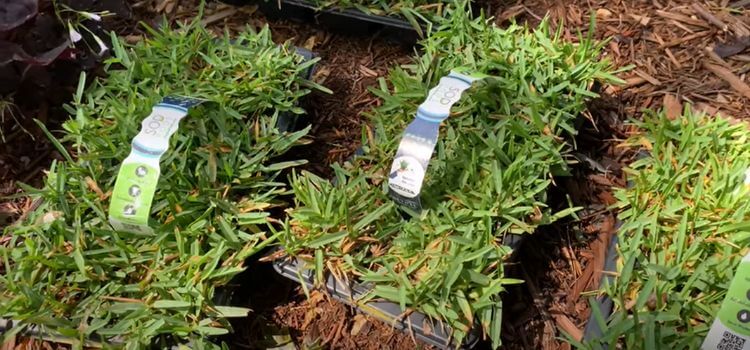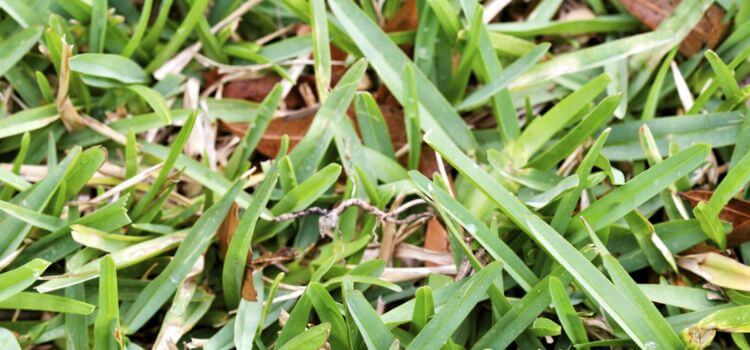As an Amazon Associate, I earn from qualifying purchases.
To spread St. Augustine grass quickly, ensure proper watering, fertilization, and mowing practices. Aerate the soil and control weeds effectively.
St. Augustine grass is famous for its lush, green appearance and ability to thrive in warm climates. Achieving a thick, healthy lawn requires understanding its growth needs and implementing the proper care practices. Regular watering is essential, as St. Augustine grass prefers moist soil.
Fertilizing with the correct nutrients boosts growth and strengthens the grass. Mowing at the recommended height encourages spread and prevents weed invasion. Aeration improves soil health and promotes root development.
Additionally, keeping the lawn free from weeds ensures that the grass can spread without competition. You can enjoy a vibrant St. Augustine lawn in no time by following these steps.
St. Augustine Grass
Many homeowners choose St. Augustine grass because it offers a lush, green lawn. Understanding its characteristics and ideal growing conditions is crucial to helping it spread quickly.
Characteristics Of St. Augustine Grass
St. Augustine grass has several key characteristics:
- Thick and Dense: Forms a dense turf that chokes out weeds.
- Broad Blades: Features wide, flat blades that create a carpet-like appearance.
- Dark Green Color: A rich, green hue enhances curb appeal.
- Heat Tolerance: Thrives in hot climates and withstands high temperatures.
- Shade Tolerance: Performs well in partially shaded areas.
Ideal Growing Conditions
Ensuring optimal growing conditions can make St. Augustine grass spread quickly:
| Condition | Details |
|---|---|
| Soil Type | Prefers well-drained, sandy soil. |
| pH Level | Ideal pH range is 5.0 to 8.5. |
| Sunlight | Requires 6-8 hours of sunlight daily. |
| Watering | Needs 1 inch of water per week. |
| Temperature | Grows best in temperatures between 80°F and 100°F. |
St. Augustine grass is known for its thick, dense growth and broad blades. It thrives in hot climates and partially shaded areas. Ideal conditions include well-drained, sandy soil, a pH of 5.0 to 8.5, ample sunlight, and regular watering.

Preparing The Soil
Proper soil preparation is essential for allowing your St. Augustine grass to spread quickly. Healthy soil is the foundation for a lush, green lawn. Follow these steps to ensure your soil is ready for St. Augustine grass.
Testing Soil Quality
Before planting, test your soil quality. Soil testing kits are available at gardening stores. They help measure pH levels and essential nutrients.
St. Augustine grass thrives in slightly acidic to neutral soil. The ideal pH range is 6.0 to 7.5. If the pH level is off, adjust it with lime to raise the pH or sulfur to lower it.
Make sure your soil has enough nutrients. Essential nutrients include nitrogen, phosphorus, and potassium. A soil test will show what needs to be added.
Improving Soil Structure
Good soil structure is crucial for grass growth. Start by removing debris like rocks and weeds. This ensures roots have room to spread.
Next, aerate the soil. Use a garden fork or aerator tool. Aeration helps roots get oxygen and water. It also breaks up compacted soil.
Add organic matter such as compost or aged manure. This improves soil texture and provides nutrients. Spread a 2-3 inch layer over the soil and mix it in well.
Avoid soil that is too sandy or clay-heavy. Sandy soil drains too quickly, while clay holds too much water. Balance the soil by adding compost or peat moss.
If needed, consider using a soil conditioner. These products improve soil structure and nutrient content. Follow the product instructions for the best results.
Once the soil is ready, you are well on your way to a thriving St. Augustine lawn. Proper soil preparation is the key to success.
The Right Fertilizer
Choosing the right fertilizer is essential for making St Augustine grass spread quickly. The proper nutrients help the grass grow lush and green. This section will guide you on what to look for in a fertilizer. Understanding the role of nitrogen and other essential nutrients will ensure your lawn thrives.
Importance Of Nitrogen
Nitrogen is crucial for grass growth. It makes the grass blades green and robust. High nitrogen levels can help your grass spread rapidly. Look for a fertilizer with a high nitrogen content. This nutrient promotes faster growth and a healthier lawn.
In the table below, find the recommended nitrogen levels for different types of fertilizers:
| Fertilizer Type | Nitrogen Content |
|---|---|
| Slow-Release | 20% – 30% |
| Quick-Release | 10% – 20% |
Using the right amount of nitrogen ensures your St Augustine grass remains healthy. Over-fertilizing can cause harm, so follow the guidelines on the fertilizer package.

Other Essential Nutrients
Besides nitrogen, other nutrients are vital for the grass to spread quickly. Phosphorus aids in root development. Potassium strengthens the grass, making it more resistant to diseases and drought.
Here are some other essential nutrients:
- Iron: Enhances the green colour of the grass.
- Calcium: Improves soil structure.
- Magnesium: Essential for chlorophyll production.
Ensure your fertilizer includes these nutrients. They support overall grass health and promote quicker spreading. Check the label for a balanced mix of these elements.
Watering Techniques
Understanding the proper watering techniques is essential for making St. Augustine grass spread quickly. Proper watering ensures the grass receives the nutrients it needs to thrive. Below are some effective watering techniques to help you achieve a lush, green lawn.
Proper Irrigation Schedule
Creating a consistent watering schedule is critical to promoting rapid growth. Water your St. Augustine grass early in the morning. This allows the water to soak into the soil before the day’s heat evaporates. Aim to water deeply rather than frequently.
- Early Morning Watering: Water between 6 AM and 10 AM.
- Deep Watering: Ensure water reaches 6-8 inches deep.
- Frequency: Water 2-3 times per week during growing season.
Avoiding Overwatering
Overwatering can be as harmful as underwatering. Excess water can lead to root rot and fungal diseases. Monitor your lawn and soil to ensure you provide the right amount of water.
| Signs of Overwatering | Action to Take |
|---|---|
| Yellowing Grass | Reduce watering frequency. |
| Mushy Soil | Allow soil to dry out between watering. |
| Fungal Growth | Apply fungicide and adjust watering the schedule. |
Keep an eye on weather forecasts. Rainfall can supplement your watering schedule. Adjust your watering accordingly to prevent overwatering.
- Check soil moisture before watering.
- Use a rain gauge to measure natural precipitation.
- Ensure good drainage to prevent water accumulation.
Mowing Practices
Mowing practices ensure that your St. Augustine grass spreads quickly and healthily. Proper mowing can encourage growth, reduce weeds, and create a green lawn. Below, we delve into optimal mowing height and frequency to help you achieve the best results for your St. Augustine grass.
Optimal Mowing Height
Maintaining the optimal mowing height for St. Augustine grass is essential for its health. The ideal height is between 2.5 and 4 inches. Cutting the grass too short can stress it and slow its spread. Taller grass blades allow for better photosynthesis and root development.
Use a sharp mower blade to ensure clean cuts. Dull blades can damage the grass and lead to disease. Adjust your mower deck to the highest setting for the first mow of the season. Gradually lower it to the recommended height as the grass starts growing actively.
Frequency Of Mowing
Frequent mowing is vital for promoting healthy growth and spreading St. Augustine grass. During the growing season, mow your lawn once a week. This frequency helps maintain the optimal height and keeps the grass from becoming too tall.
If the grass grows too long, cut it in stages. Remove no more than one-third of the grass blade height at a time. This practice prevents shock and encourages even growth.
In the table below, find a quick reference for mowing frequency based on different growth stages:
| Growth Stage | Mowing Frequency |
|---|---|
| Early Spring | Every 10-14 days |
| Peak Growing Season | Every 7 days |
| Late Fall | Every 14-21 days |
Remember to adjust the frequency based on weather conditions and growth patterns. Consistent mowing encourages a dense, healthy lawn.
Dealing With Weeds And Pests
Keeping your St. Augustine grass healthy and vibrant can be challenging due to weeds and pests. Both can hinder the grass from spreading quickly. This section will help you identify common weeds and employ natural pest control methods to ensure your lawn thrives.
Identifying Common Weeds
Weeds compete with your St. Augustine grass for nutrients, sunlight, and water. Identifying them can prevent them from spreading.
| Weed | Characteristics |
|---|---|
| Crabgrass | Light green, grows low to the ground |
| Dandelion | Yellow flowers, deep taproot |
| Nutsedge | Triangular stems, yellow or purple flowers |
Natural Pest Control Methods
Pests can damage St. Augustine grass by feeding on its roots and leaves. Using natural methods to control them ensures your lawn remains chemical-free and healthy.
- Beneficial Insects: Ladybugs and lacewings eat harmful pests.
- Neem Oil: A natural pesticide that is safe for your lawn.
- Diatomaceous Earth: Sprinkle around the lawn to deter insects.
Implementing these natural pest control methods will protect your St. Augustine grass. Your lawn will spread quickly and remain lush and green.
Regular Maintenance Tips
Maintaining a healthy lawn is essential for quick growth. Regular maintenance ensures that your St Augustine grass spreads rapidly. Follow these essential tips to keep your lawn in shape and encourage fast spreading.
Aerating The Lawn
Aerating the lawn involves poking holes in the soil. This process allows air, water, and nutrients to reach the roots. It improves soil structure and enhances grass growth.
Benefits of aerating:
- Reduces soil compaction
- Promotes root growth
- Improves water absorption
Aerate your lawn at least once a year. For compacted soil, aerate twice a year. Use a garden fork or a mechanical aerator for best results.
Monitoring Grass Health
Regularly check the health of your grass. Healthy grass spreads faster and covers the lawn evenly.
Signs of healthy grass:
| Sign | Description |
|---|---|
| Vibrant Green Color | Indicates good nutrient levels |
| Strong Blades | Shows robust growth and resilience |
| Even Growth | Demonstrates consistent care |
Watch out for yellow or brown patches. These can signal poor health. Address any issues quickly to maintain overall grass health.
Quick tips:
- Water your lawn deeply but infrequently.
- Fertilize regularly using a balanced fertilizer.
- Mow the grass at the right height.
Following these regular maintenance tips ensures your St Augustine grass spreads quickly and stays healthy.
Frequently Asked Questions
Fertilize St. Augustine grass with a balanced fertilizer. Water deeply and regularly. Ensure proper sunlight and mow at the correct height. Control pests and weeds to prevent nutrient competition.
Yes, St. Augustine grass can fill in bare spots. It spreads through stolons, creating a dense lawn. Regular watering and fertilization help the process. Proper lawn care ensures healthy growth and coverage.
To thicken St. Augustine grass, mow regularly, water deeply, and fertilize appropriately. Aerate the soil annually and control weeds.
The best fertilizer for St. Augustine grass is a balanced, slow-release type with a 3-1-2 or 4-1-2 ratio. Apply during the growing season for optimal results, and ensure it contains micronutrients like iron for lush, green growth.
Conclusion
Boosting the spread of St Augustine grass can be straightforward with the right techniques. Regular watering, proper mowing, and adequate fertilization are critical. Ensure optimal soil conditions and sunlight for best results. You’ll enjoy a lush, green lawn quickly with consistent care and patience.
Now, get started on creating your dream lawn!


